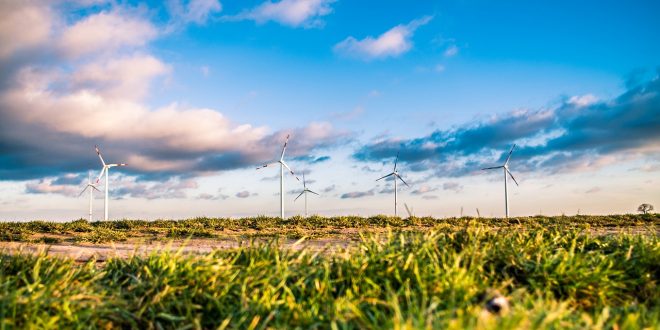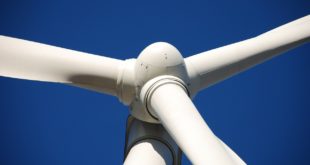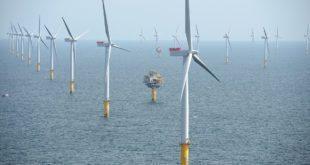The pre-pandemic wind energy market was booming. In 2019, the sector saw its second-largest expansion since 2015, adding 57.4 gigawatts of capacity. Like virtually every other industry, though, wind power experienced a sudden onslaught of disruption from COVID-19.
Now, many sectors are starting to recover, and there seems to be an end to the pandemic in sight. While COVID-19 caused widespread disruption across the board, the overall impact has varied between industries. In some ways, these changes could end up being positive for some markets.
Here’s how wind energy has fared and where it could go after the pandemic.
Slowed Manufacturing
Early in the pandemic, the wind power industry encountered difficulties with manufacturing. Wind turbines require specialized equipment, like dry-type transformers with lower maintenance needs and massive fan blades. These components typically come from various manufacturing facilities, which created an issue when COVID-19 struck.
Many factories could no longer keep as many staff in the building at once, limiting productivity. Some facilities had to close altogether, further slowing the pace of production. Two of the largest wind turbine manufacturers outside of China suffered net losses in the first half of 2020.
Since the manufacturing of turbine components slowed, so did new installations. Even if organizations wanted to invest in new wind farms, many couldn’t get the necessary parts in time. While manufacturing has since regained productivity, these early losses have delayed many projects.
Delayed Construction
Lower manufacturing capacity was just one of the problems wind energy faced amid COVID-19. Obtaining and shipping the necessary components is only part of the process of installing new wind turbines. The construction teams that assemble the turbines also encountered delays and disruptions.
Like manufacturing, the construction industry had to reduce on-site worker numbers in many areas. In some, teams had to pause projects entirely. According to the Associated General Contractors of America, 60% of construction firms had to postpone or cancel at least one upcoming project.
Construction companies already faced a labor shortage that hampered their productivity. Work site limits and delays from COVID-19 exacerbated this issue. As a result, the construction of new turbines at the height of the pandemic may have fallen short of expectations.
Increased Investments
Pre-pandemic wind energy looked promising, with wind turbines generating roughly 8% of all power in the U.S. Despite the economic hardships of COVID-19, 2020 seems to have continued this trend. While manufacturing and construction slowed in the first part of the year, wind power investments rose overall.
Global renewable energy funding rose 2% to $303.5 billion by the end of 2020. Wind energy accounted for much of that growth, with funding increasing 56% over 2019 levels. While the sector faced similar hardships as other industries, the pandemic seems to have inspired greater spending on renewable energy.
COVID-19’s market disruptions highlighted the volatility of fossil fuels, encouraging people to turn to renewables. Many organizations may see the pandemic as an opportunity to progress or change direction. Wind energy and other renewables have emerged as a possible vector for progress, attracting more investments.
Positive Signs on the Horizon
Other developments that arose amid COVID-19 paint a promising picture of wind power’s future. Several countries have extended wind project commission deadlines, giving construction teams more time to finish projects. These extensions may help the sector overcome delays from earlier in the pandemic.
Experts also predict that power generation costs will rise for fossil fuels in the next few years. As that happens, more companies will likely move to renewables like wind power. Wind energy is becoming a more attractive fuel source, while the opposite is happening with fossil fuels.
Similarly, fossil fuel additions fell in 2020 as wind and solar installations rose. While wind power suffered early in the pandemic, so did fossil fuels. But wind managed to rebound. If these trends continue, renewables could be better off after COVID-19 than they were before.
Wind Energy Can Emerge Stronger From COVID-19
The COVID-19 pandemic disrupted many areas of life, but it hasn’t halted progress in wind energy. Despite early trouble in manufacturing and construction, the sector experienced one of its most successful years overall in 2020. By the time COVID-19 fades, it could be stronger than ever.
Much remains uncertain about the future of energy, but signs look promising. If wind power continues on its current trajectory, it could see remarkable progress in the near future.
 Emily Newton is the Editor-in-Chief of Revolutionized Magazine, an online publication that explores innovations in science and technology.
Emily Newton is the Editor-in-Chief of Revolutionized Magazine, an online publication that explores innovations in science and technology.

 Alternative Energy HQ solar power for homes, wind energy, and bio fuel issues
Alternative Energy HQ solar power for homes, wind energy, and bio fuel issues







